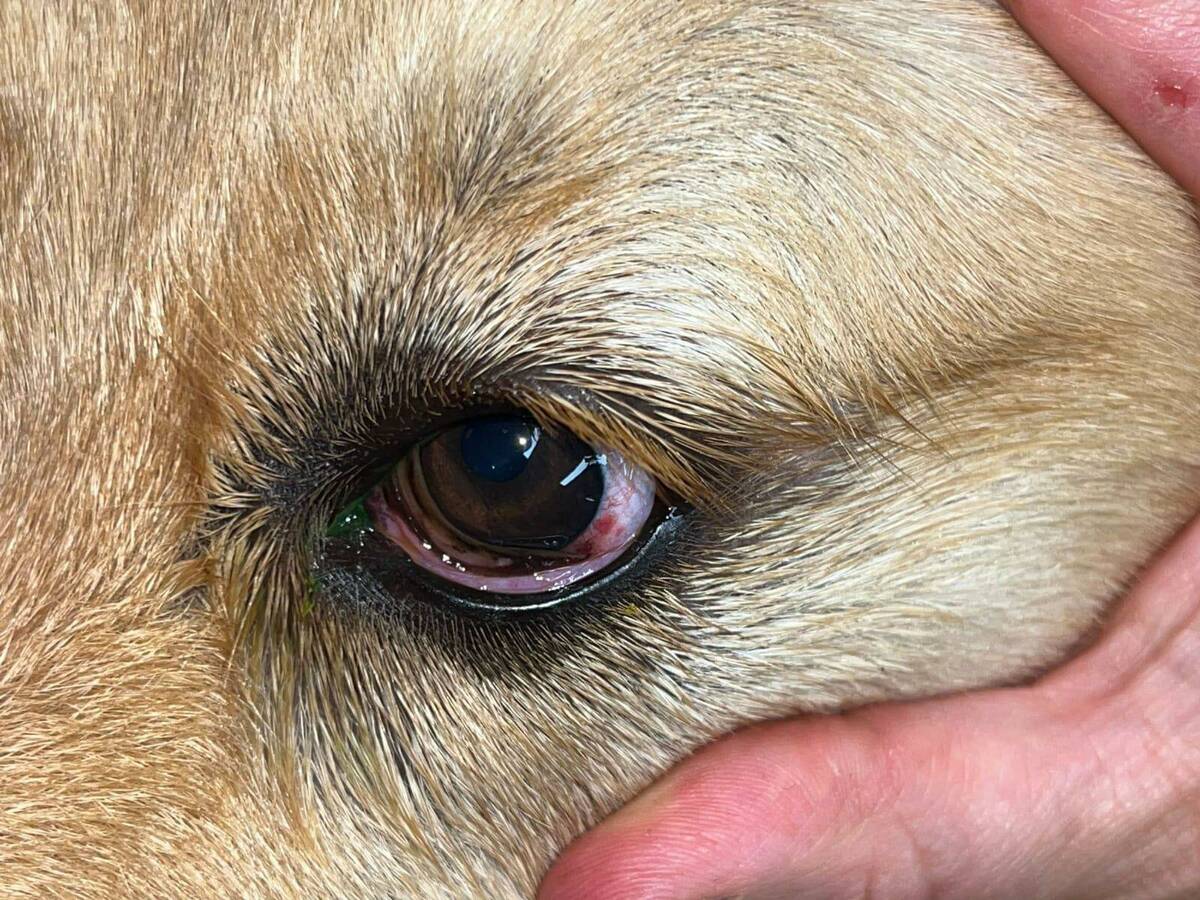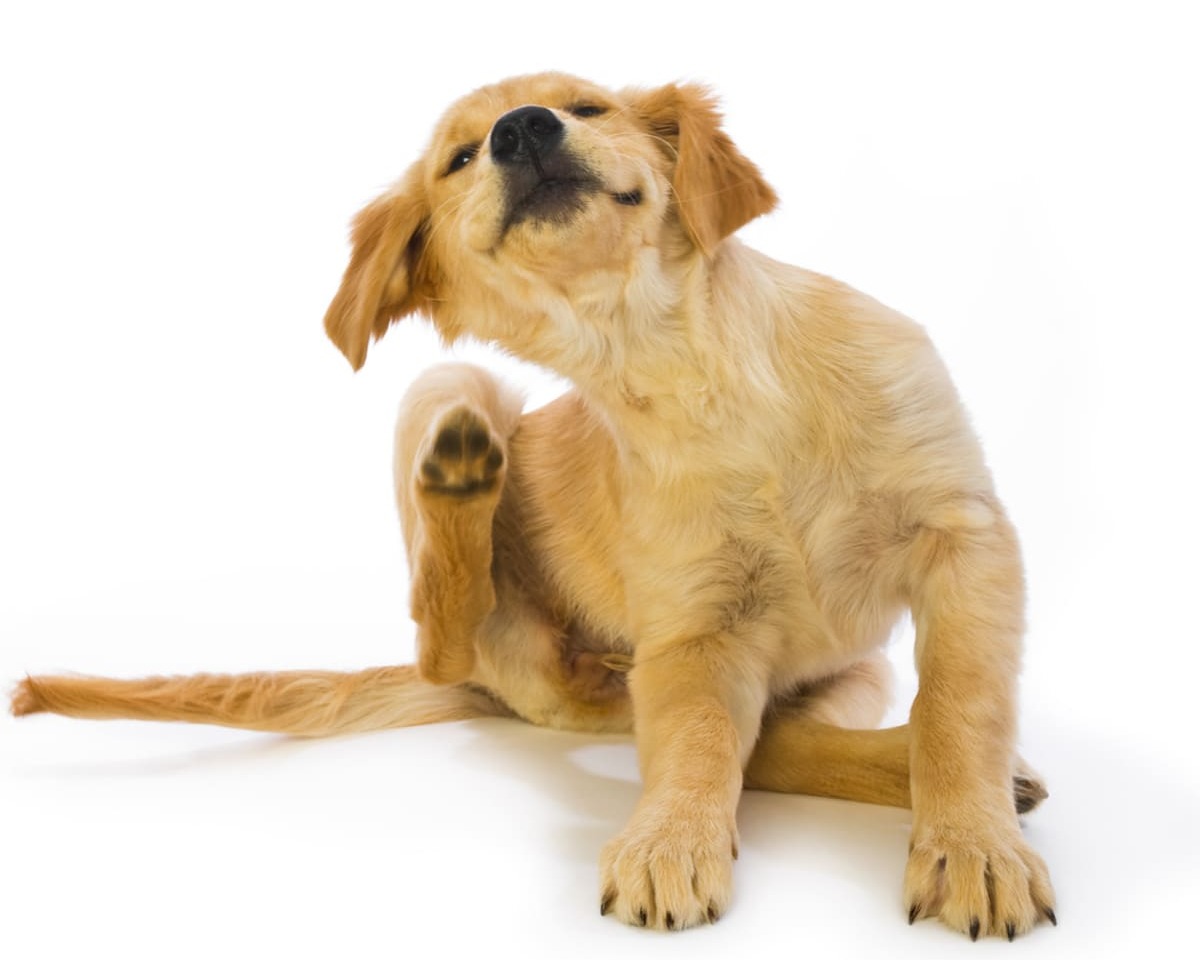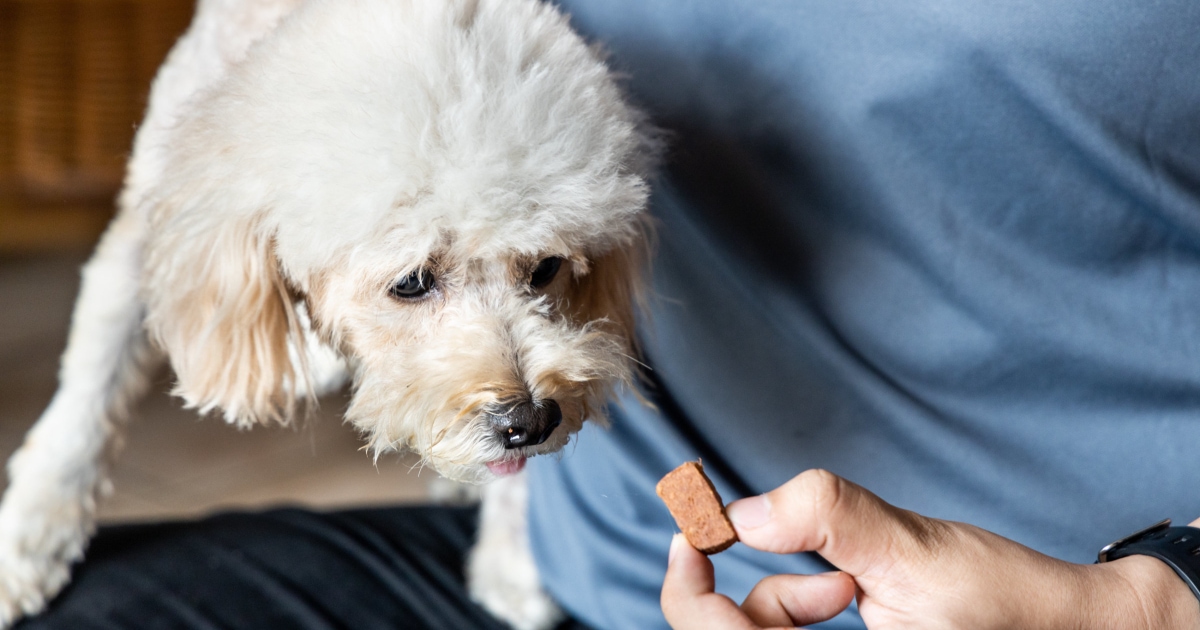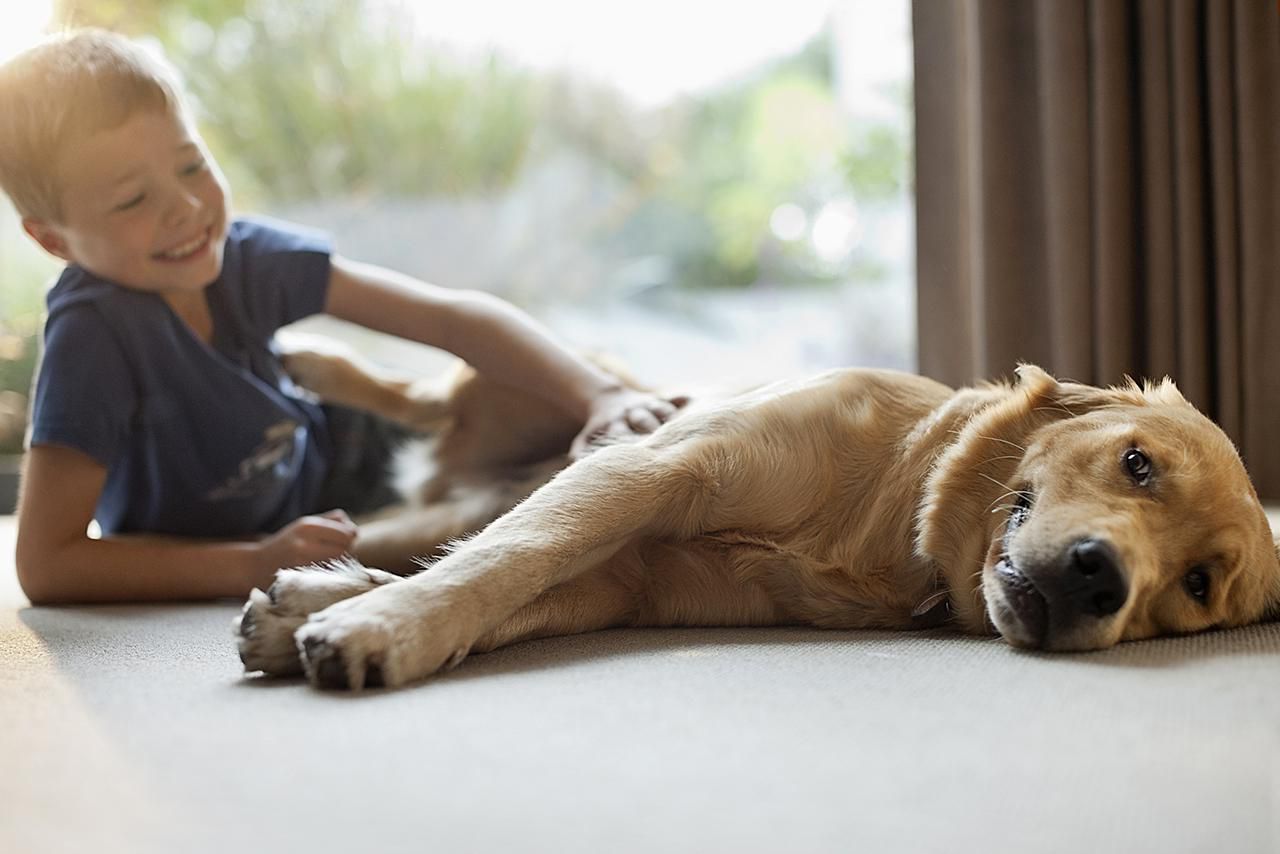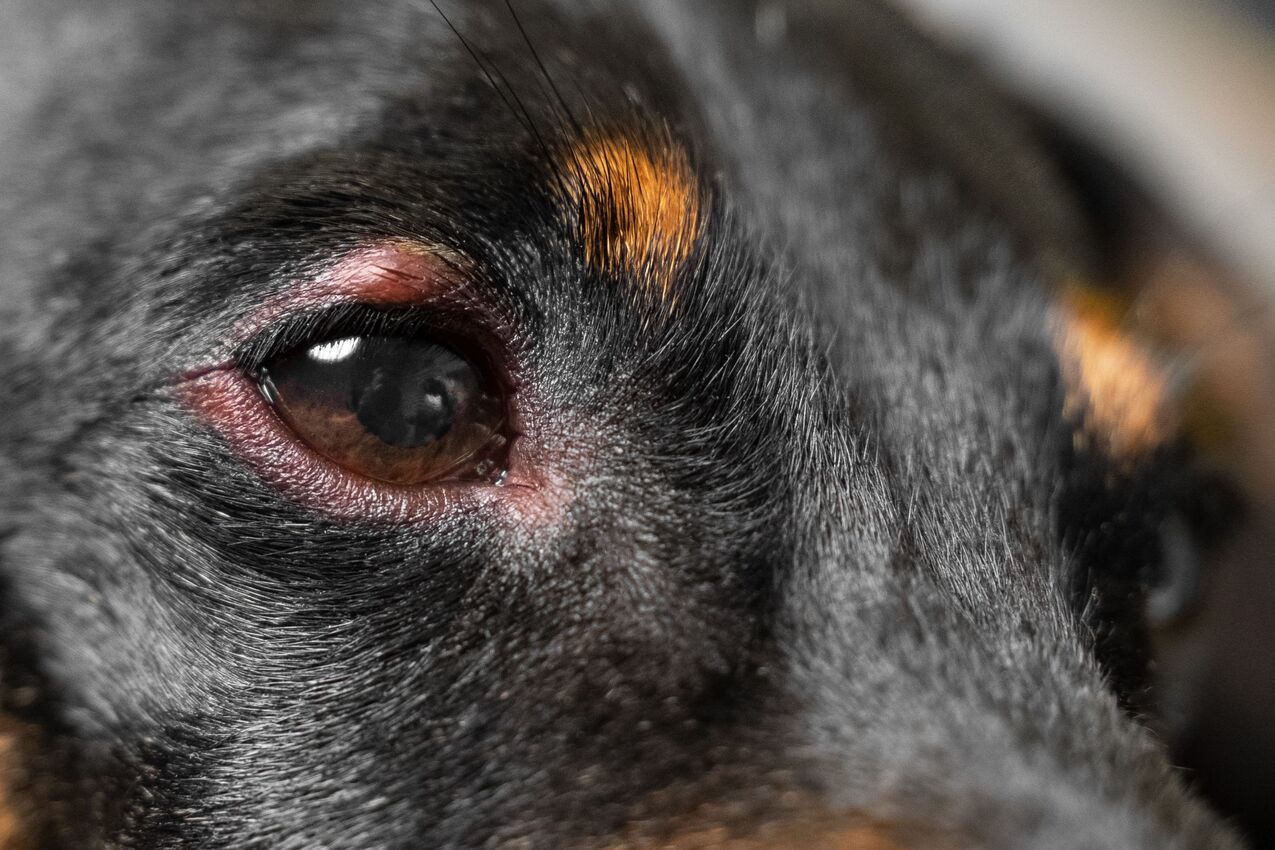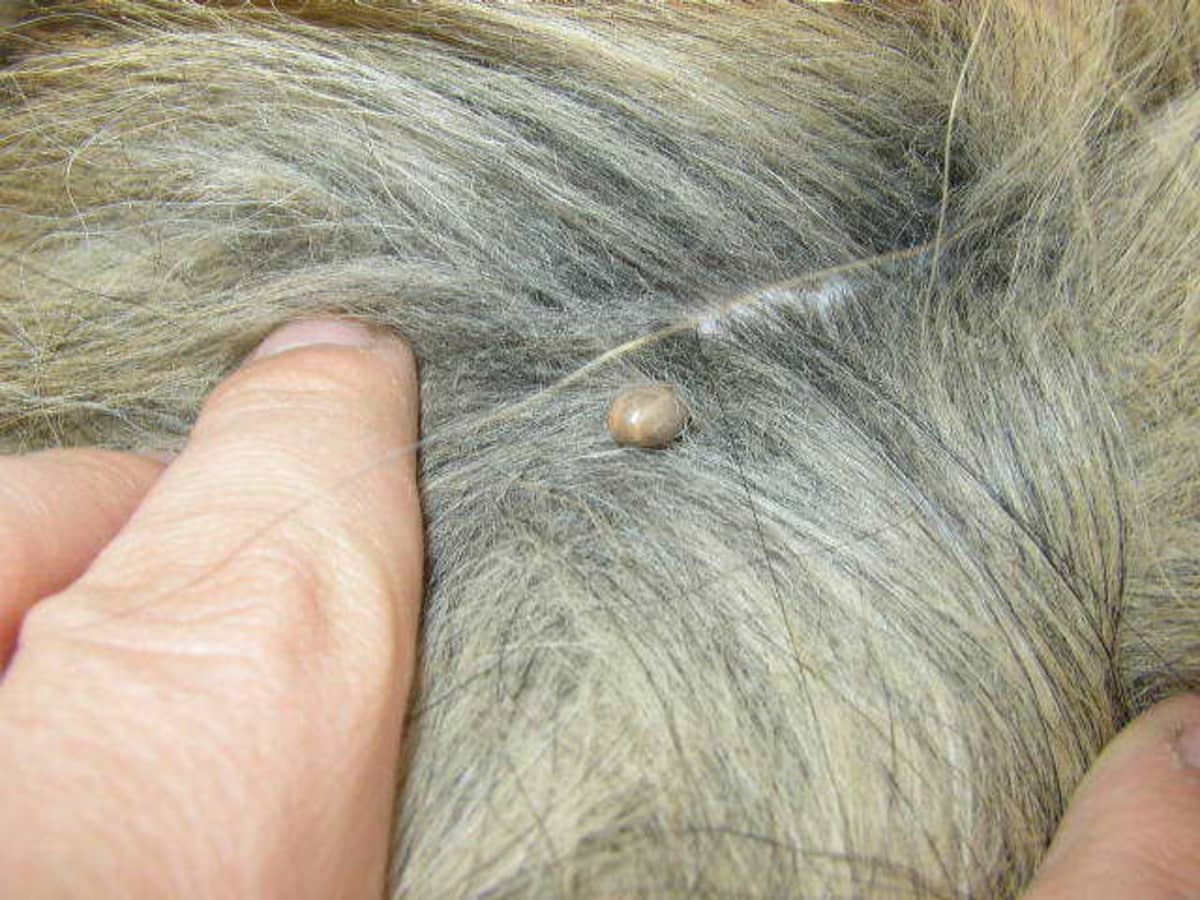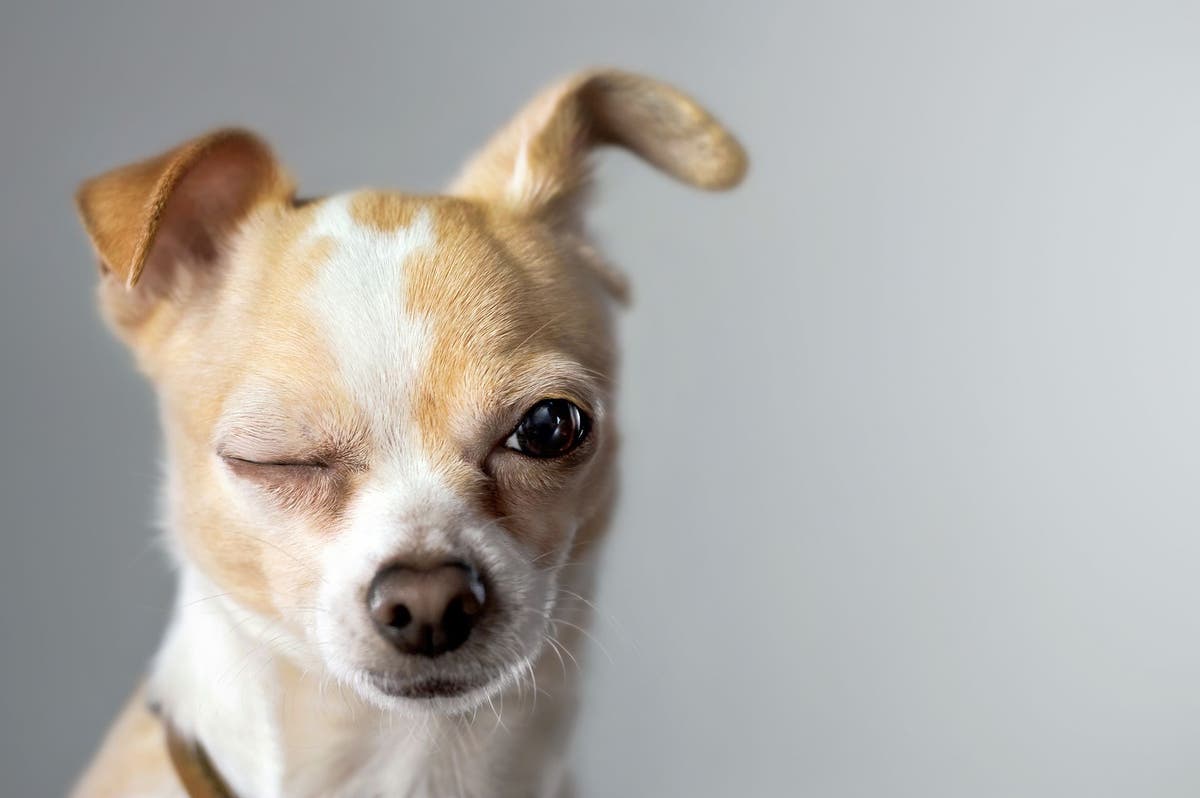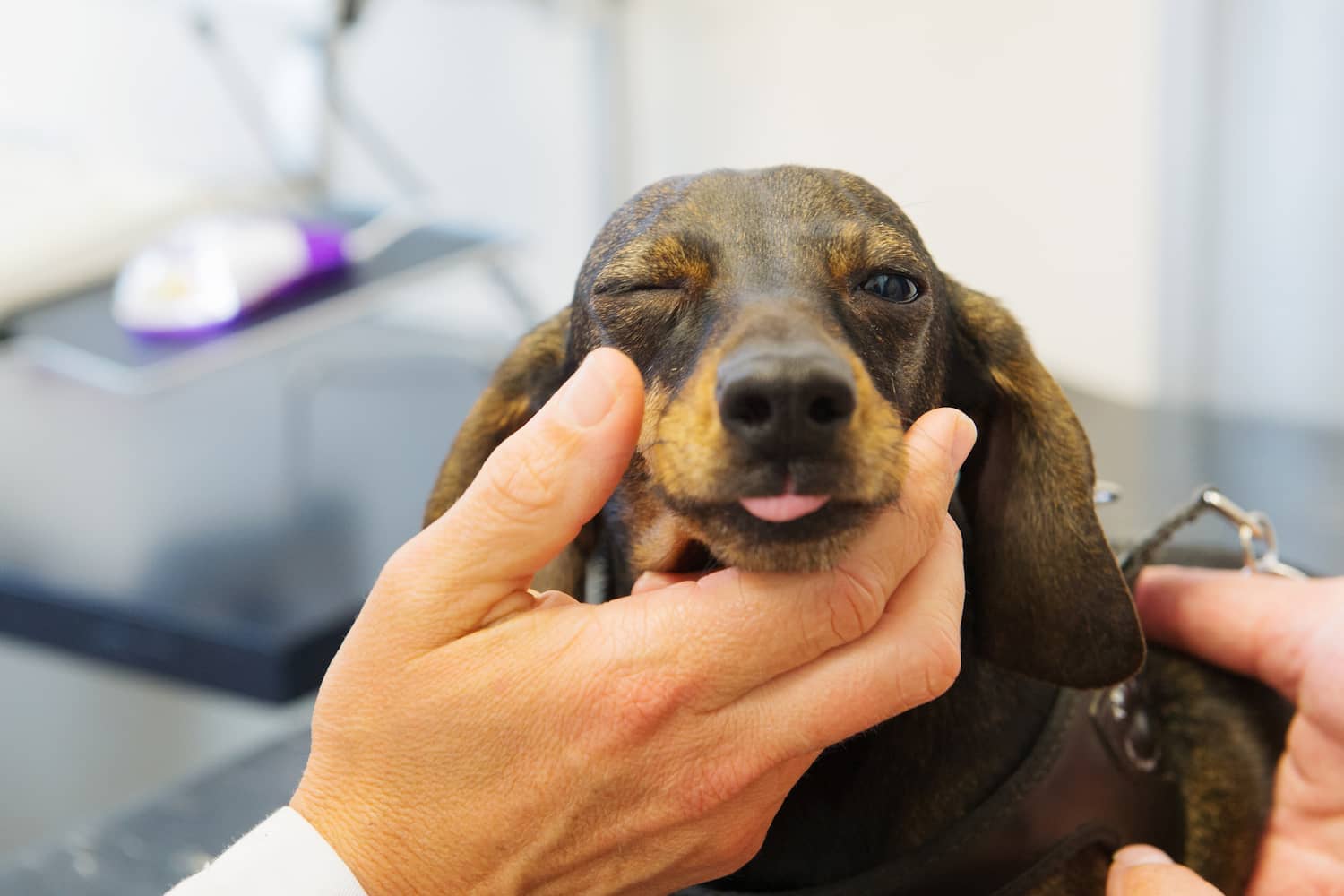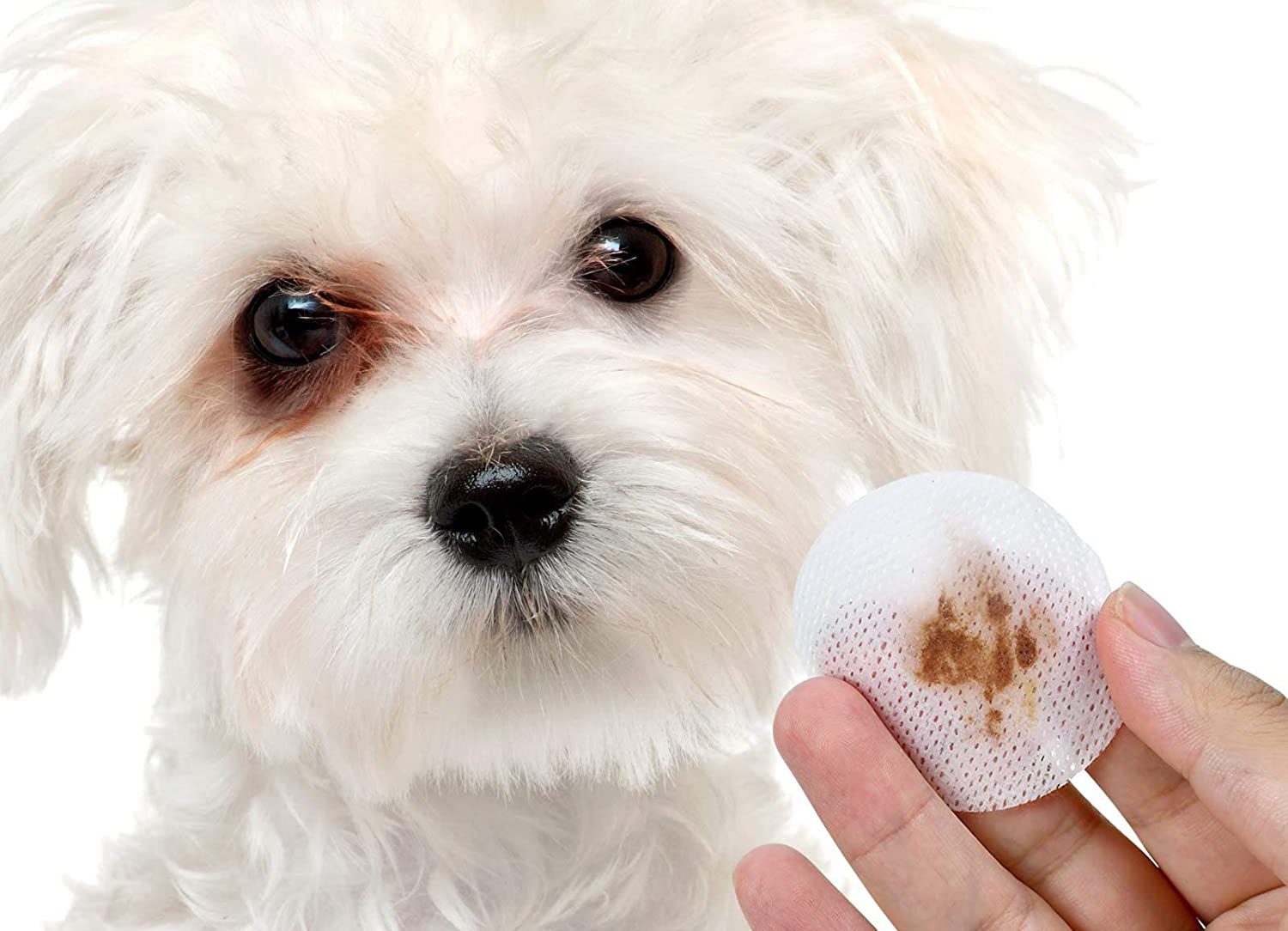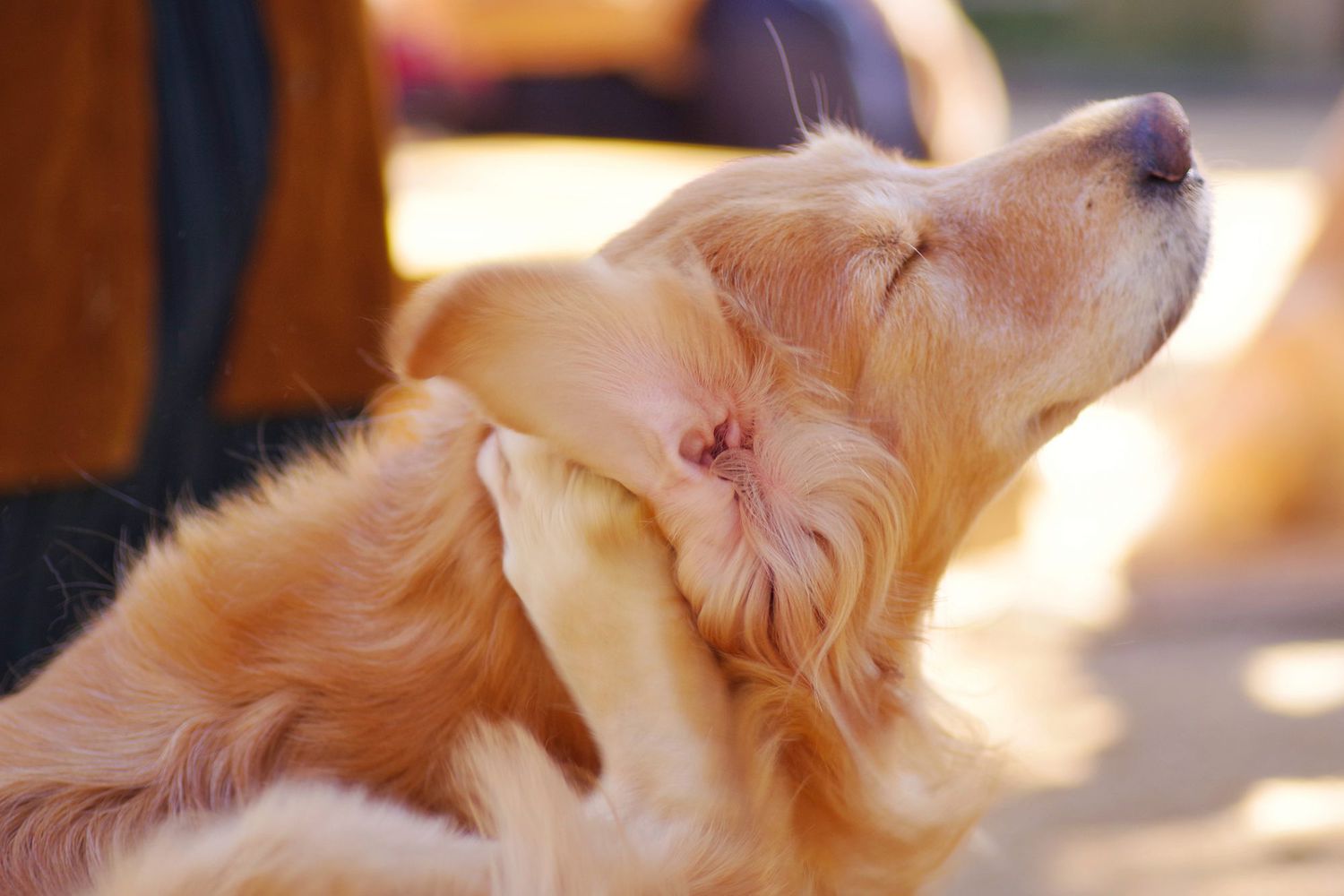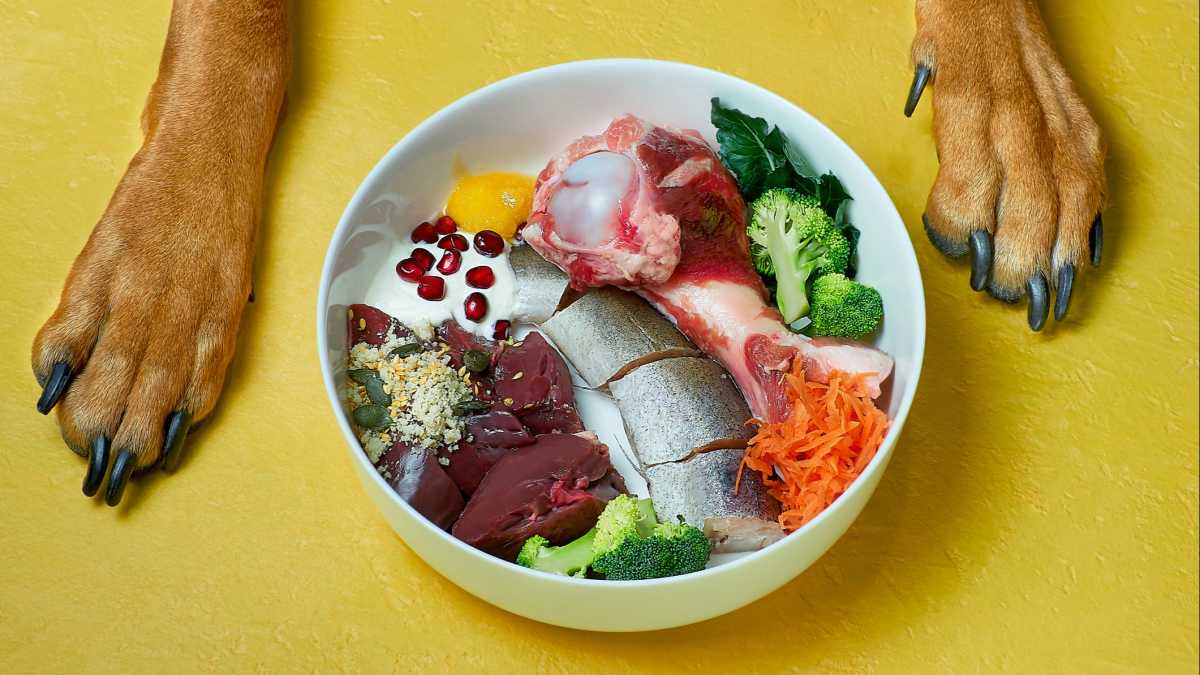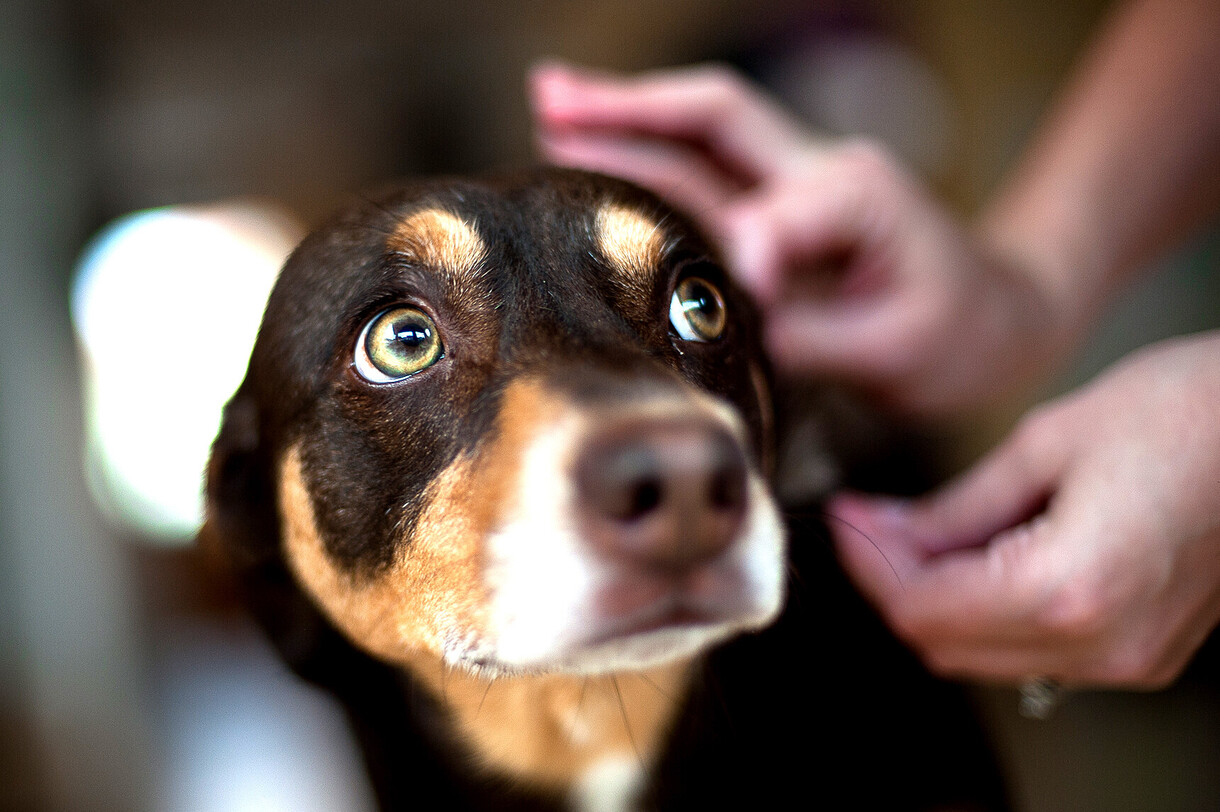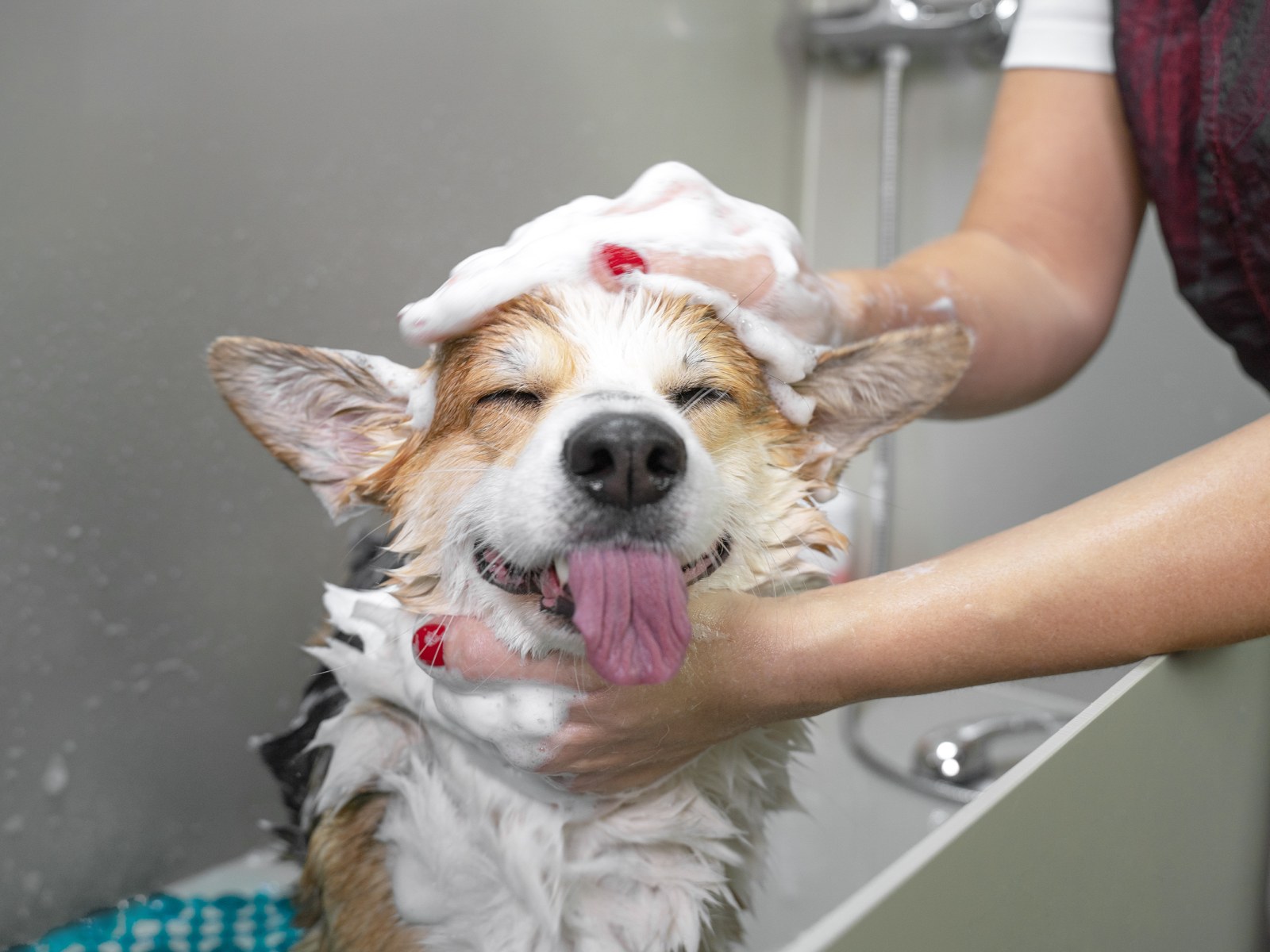Home>Health & Wellness>Common Health Issues>Eye and Ear Health>How Do I Get A Hair Out Of My Dog’s Eye


Eye and Ear Health
How Do I Get A Hair Out Of My Dog’s Eye
Published: February 11, 2024
Learn effective ways to remove hair from your dog's eye and maintain their eye and ear health. Expert tips and advice for pet owners.
(Many of the links in this article redirect to a specific reviewed product. Your purchase of these products through affiliate links helps to generate commission for Pawsomeoldies.com, at no extra cost. Learn more)
Table of Contents
Introduction
Finding a hair in your dog's eye can be a concerning and uncomfortable experience for both you and your furry friend. Dogs, with their curious and playful nature, are prone to getting foreign objects, such as hair, lodged in their eyes. As a responsible pet owner, it's essential to address this issue promptly to prevent any potential discomfort or complications for your canine companion.
When a hair becomes trapped in a dog's eye, it can lead to irritation, redness, excessive tearing, and even potential damage to the delicate structures of the eye. As a result, it's crucial to handle the situation with care and precision to ensure the well-being of your pet.
In this article, we will explore the steps you can take to safely and effectively remove a hair from your dog's eye. Additionally, we will discuss preventive measures to minimize the risk of future incidents and provide guidance on when it's necessary to seek professional help from a veterinarian.
By gaining a deeper understanding of how to address this common issue, you can equip yourself with the knowledge and skills needed to support your dog's eye health and overall well-being. Let's delve into the essential strategies for addressing and preventing hair in your dog's eye, ensuring that your furry companion remains happy, healthy, and free from discomfort.
Read more: How To Get Sand Out Of Dog’s Eye
Understanding the Problem
When a hair becomes lodged in a dog's eye, it can cause significant discomfort and distress. The presence of a foreign object in the eye can lead to irritation, redness, and excessive tearing, all of which can be distressing for your canine companion. Additionally, the delicate structures of the eye can be at risk of damage if the hair is not promptly and carefully removed.
Dogs, with their inquisitive nature, are susceptible to encountering various foreign objects, including hair, in their environment. Whether it's during outdoor adventures, playtime, or simply through everyday activities, dogs can inadvertently come into contact with loose hairs that may find their way into their eyes.
The anatomy of a dog's eye makes it particularly vulnerable to the intrusion of foreign objects. The presence of a hair in the eye can lead to discomfort and potential complications, making it essential for pet owners to recognize and address this issue promptly.
Understanding the problem involves recognizing the signs of discomfort or distress in your dog. If you notice excessive blinking, pawing at the eye, or increased tearing, it may indicate the presence of a foreign object, such as a hair, in the eye. Additionally, redness or inflammation around the eye can be a visible indicator of the problem.
It's important to approach the situation with empathy and attentiveness, as your dog may exhibit signs of discomfort or anxiety due to the presence of the hair in their eye. By understanding the potential impact of this issue on your dog's well-being, you can take proactive steps to address it effectively and alleviate any discomfort your pet may be experiencing.
In the next sections, we will explore the steps for assessing the situation, gently removing the hair, and implementing preventive measures to safeguard your dog's eye health. By gaining a comprehensive understanding of the problem at hand, you can equip yourself with the knowledge and skills needed to provide the best possible care for your beloved canine companion.
Assessing the Situation
Assessing the situation when a hair becomes lodged in your dog's eye is a crucial first step in addressing the issue effectively. It involves carefully observing your dog's behavior and examining the affected eye to determine the extent of the problem. By conducting a thorough assessment, you can gain valuable insights into the nature of the situation and make informed decisions regarding the next steps to take.
Start by observing your dog's behavior for any signs of discomfort or distress. Watch for excessive blinking, pawing at the eye, or rubbing the face against surfaces, as these may indicate that the hair is causing irritation. Additionally, pay attention to any changes in your dog's demeanor, such as restlessness or reluctance to keep the affected eye open.
Next, gently restrain your dog, if necessary, to allow for a closer examination of the affected eye. Approach your dog calmly and reassure them with soothing words and gentle strokes to help them remain calm during the assessment. Using a well-lit area, carefully inspect the eye for any visible signs of a foreign object, such as a hair, that may be causing discomfort.
Look for redness, excessive tearing, or any unusual discharge around the eye, as these may indicate the presence of a foreign object. If the hair is visible on the surface of the eye or trapped in the eyelashes, avoid attempting to remove it immediately to prevent further irritation or injury to the delicate structures of the eye.
It's important to assess the severity of the situation and your dog's level of distress before proceeding with any intervention. If your dog appears to be in significant discomfort or if the eye shows signs of inflammation or injury, it's advisable to seek professional veterinary assistance promptly.
By carefully assessing the situation, you can gather essential information to guide your next steps in addressing the issue. This proactive approach allows you to prioritize your dog's well-being and take appropriate measures to ensure the safe and effective removal of the hair from their eye.
In the following sections, we will delve into the steps for gently removing the hair from your dog's eye and implementing preventive measures to minimize the risk of future incidents. By approaching the situation with attentiveness and care, you can provide the best possible support for your dog's eye health and overall well-being.
Gently Removing the Hair
When it comes to gently removing a hair from your dog's eye, it's essential to approach the process with patience, precision, and a deep understanding of your pet's comfort and safety. The delicate nature of the eye requires careful handling to ensure that the hair is removed effectively without causing further irritation or injury.
Before attempting to remove the hair, it's crucial to create a calm and reassuring environment for your dog. Find a quiet and well-lit area where you can comfortably and safely address the issue. If your dog is particularly anxious or restless, consider enlisting the help of a family member or friend to gently hold and soothe your pet during the process.
Start by gently restraining your dog, if necessary, to ensure that they remain still and cooperative during the hair removal process. Approach your dog with a calm and reassuring demeanor, using soothing words and gentle strokes to help them feel at ease. This approach can help minimize any potential stress or anxiety your dog may experience during the procedure.
Using a clean and dampened cotton ball or gauze pad, carefully moisten the area around your dog's eye to help soften the hair and reduce any potential friction during removal. Avoid using excessive force or pressure, as this can lead to further discomfort for your pet. With a gentle and steady hand, carefully lift the hair away from the surface of the eye, taking care to avoid contact with the delicate structures of the eye.
If the hair is trapped in the eyelashes, use a pair of blunt-tipped grooming scissors to carefully trim the affected lashes, allowing the hair to be released without causing any harm to your dog. Exercise extreme caution and ensure that your dog remains calm and still throughout the trimming process to prevent any accidental injury.
After successfully removing the hair from your dog's eye, observe the affected eye for any signs of irritation or discomfort. If your dog continues to exhibit symptoms of distress or if the eye shows signs of inflammation, it's advisable to seek professional veterinary assistance to ensure that the eye receives the necessary care and attention.
By approaching the process of gently removing the hair with attentiveness and care, you can effectively address the issue while prioritizing your dog's comfort and well-being. This proactive approach allows you to provide the best possible support for your dog's eye health, ensuring that they remain happy, healthy, and free from discomfort.
In the subsequent section, we will explore preventive measures to minimize the risk of future incidents and provide guidance on when it's necessary to seek professional help from a veterinarian. By gaining a comprehensive understanding of these essential strategies, you can further enhance your ability to support your dog's eye health and overall well-being.
Preventing Future Incidents
Preventing future incidents of hair getting into your dog's eye is essential for maintaining their eye health and overall well-being. By implementing proactive measures and staying attentive to your dog's environment and habits, you can significantly reduce the risk of recurring incidents. Here are key strategies to prevent future occurrences:
-
Regular Grooming: Regular grooming practices, including brushing your dog's coat and trimming their facial hair, can help minimize the presence of loose hairs that may find their way into their eyes. By keeping your dog's fur well-maintained, you can reduce the likelihood of hair becoming a source of irritation for their eyes.
-
Eye Protection: In certain environments or situations where your dog may be exposed to airborne debris or dust, consider using protective eyewear designed for dogs. Dog goggles or protective eyewear can shield your pet's eyes from potential irritants, including loose hairs, while allowing them to enjoy outdoor activities safely.
-
Environmental Awareness: Stay mindful of your dog's surroundings, particularly in areas where loose hairs or other foreign objects may be prevalent. Whether it's during outdoor walks, playtime, or interactions with other pets, being aware of potential sources of eye irritants can help you take proactive measures to prevent incidents.
-
Regular Veterinary Check-ups: Schedule routine veterinary check-ups to have your dog's eyes examined by a professional. Regular eye examinations can help detect any underlying issues or potential risks, allowing for early intervention and preventive measures to safeguard your dog's eye health.
-
Positive Reinforcement: Encourage positive behaviors that minimize the risk of eye-related incidents. For example, rewarding your dog for staying calm during grooming sessions or outdoor activities can help reinforce positive behaviors and reduce the likelihood of them rubbing their eyes, which can lead to the intrusion of foreign objects, including hair.
By incorporating these preventive strategies into your routine care for your dog, you can create a supportive and safe environment that minimizes the risk of hair or other foreign objects causing discomfort or irritation to their eyes. Additionally, staying attuned to your dog's behavior and promptly addressing any signs of eye discomfort can further contribute to proactive eye care and overall well-being for your beloved pet.
In the following section, we will discuss when it's necessary to seek professional help from a veterinarian, providing guidance on when professional intervention may be required to address eye-related issues effectively.
When to Seek Professional Help
Recognizing the appropriate circumstances that warrant professional veterinary assistance is crucial for ensuring the optimal care and well-being of your dog's eyes. While many instances of hair in the eye can be addressed through gentle removal and preventive measures, there are specific scenarios where seeking professional help is necessary to address potential complications or underlying issues effectively.
If your dog continues to exhibit signs of distress, discomfort, or persistent eye irritation after attempting to remove the hair, it's advisable to seek prompt veterinary attention. Persistent symptoms such as excessive tearing, redness, swelling, or discharge from the affected eye may indicate an underlying issue that requires professional evaluation and treatment.
Additionally, if the hair in your dog's eye has led to visible injury or trauma to the eye, including scratches or abrasions, it's essential to seek immediate veterinary care. Injuries to the delicate structures of the eye can lead to complications and require specialized treatment to prevent further damage and promote healing.
Certain breeds of dogs, particularly those with long or dense fur around the eyes, may be more susceptible to recurring incidents of hair getting into their eyes. If your dog experiences frequent episodes of hair in the eye or shows signs of chronic eye irritation, consulting with a veterinarian can help identify potential underlying causes, such as anatomical predispositions or eye-related conditions that require professional management.
Furthermore, if your dog displays sudden changes in behavior, such as increased sensitivity to light, squinting, or reluctance to open the affected eye, it may indicate a more serious issue that warrants immediate veterinary attention. These symptoms can be indicative of eye infections, corneal ulcers, or other ocular conditions that require timely diagnosis and treatment by a qualified veterinarian.
By recognizing the signs and circumstances that necessitate professional intervention, you can prioritize your dog's eye health and well-being, ensuring that they receive the necessary care and attention from a veterinary professional when needed. Prompt veterinary assessment and treatment can help address underlying issues, alleviate discomfort, and safeguard your dog's vision and overall ocular health.
In summary, being attentive to your dog's symptoms and seeking professional help when necessary are essential components of responsible pet ownership. By partnering with a trusted veterinarian, you can ensure that your dog receives comprehensive eye care and timely intervention when faced with eye-related issues, including the presence of hair in the eye.
